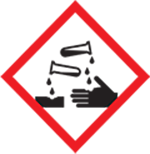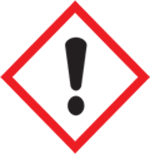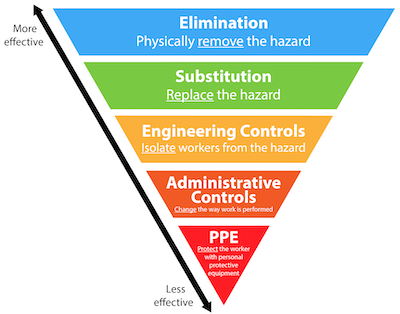Hydrogen peroxide
This chemical standard operating procedure (SOP) and the associated Safety Data Sheet (SDS) are for our safety. Read and understand both documents. If this is a paper copy, check for updated versions on the IsoLab website.
Process
We use hydrogen peroxide to remove organic and sulfur-containing compounds from carbonate containing samples.
Hazards - SDS


Harmful if swallowed. Causes severe skin burns and eye damage. May cause respiratory irritation. Toxic to aquatic life. Harmful to aquatic life with long lasting effects.
Protection - SDS

Engineering Controls
While a fume hood is not required when using hydrogen peroxide, it does provide a contained space in the event of a spill. Our fume hoods also provide a sash to act as face protection.
Administrative Controls
No administrative controls are needed.
Personal Protective Equipment (PPE)
Wear a lab coat, nitrile gloves, and eye protection. If you are using a fume hood, pull the sash down to protect your face. If you are working on a lab bench, use goggles or protective eye wear and a face shield. All PPE is found in draws on the west wall of 303B.
Handling - SDS
Keep container tightly closed when not in use. Keep away from most metals, in particular Zinc, Powdered metals, Iron, Copper, Nickel, Brass, Iron and iron salts.
Storage - SDS
In general, hydrogen peroxide must be stored in a dark cool location. Use MyChem, the UW EH&S chemical inventory database, to find exactly where in the lab suite this chemical is stored. Our hydrogen peroxide is stored in the bench-top refrigerator on the south side of 303B.
Spills - SDS
Exposure:
- Inhalation - Move to fresh air. For advice, call UW Employee Health Center (206.685.1026) or the Washington Poison Center (800.222.1222).
- Skin contact - Wash off with soap and water. For advice, call UW Employee Health Center (206.685.1026) or the Washington Poison Center (800.222.1222). For emergency help, call 911.
- Eye contact - Rinse at eye-wash station for 15 minutes. For advice, call UW Employee Health Center (206.685.1026) or the Washington Poison Center (800.222.1222). For emergency help, call 911.
Don lab coat, nitrile gloves, and protective eye wear. Use a spill kit if needed. Soak up spill with paper towels. Place paper towels in white dish tub (under north sink of 303B) that is half full of water. Allow to sit in hood until visible reaction is complete (over night). Dump water down drain. Discard paper towels into trash.
If you need assistance or advice, use the IsoLab Emergency Contacts sheet.
Consult the EH&S Spill Poster and Exposure Poster
Waste - SDS
Hydrogen peroxide does not require a waste container for pickup by EH&S. We do not put it down the drain, however. Any waste or spill debris should be collected into a white dish tub (under sink on north side of 303B), diluted with water, labeled and placed in a fume hood. With enough time, the hydrogen peroxide will go to water and oxygen. You can place a scoop of activated carbon into your white dish tub to test for the presence of hydrogen peroxide. Effervescence indicates oxygen production from hydrogen peroxide.
Training
Hydrogen peroxide is not deemed a particularly hazardous substance - PHS by EH&S and you do not need approval before using it. Still, you must complete the list of requirements below before using this or any chemical in IsoLab.
Prerequisites
- You must have completed Managing Laboratory Chemicals in the last three years. Login to check.
- Read and understand the SDS for hydrogen peroxide.
- Read, understand, and digitally sign this SOP.
